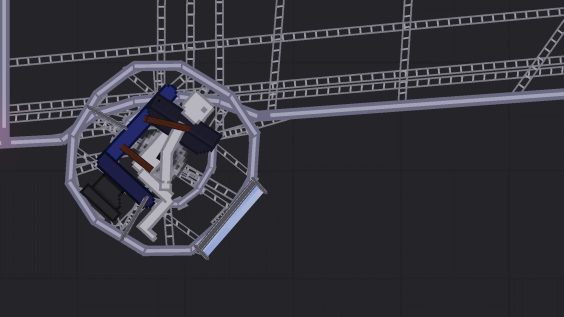
https://steamcommunity.com/sharedfiles/filedetails/?id=2442070542&searchtext=trauma+center
All About Vials
Humans, in people playground, are a lot more complex than you think, one major player in this complexity is their vitals, there are major factors to consider, consciousness, blood amount, blood, pressure, and heart rate. Now, let us take a closer look:
consciousness
Consciousness is the state of being able to control one’s balance if physically possible (not in real life but in people playground), this can be affected with a knockout syringe which will render a person unconscious for a said amount of time, this may also be affected by a blunt force impact. Consciousness will be restored once a patient is physically able to move or over a period of time.
Remember when I said “physically possible” well there’s more to that. A patient can remain conscious in the game while not moving and a patient can also just have some control over them, this may cause them to limp or stumble, but for simplification, we’ll just say that if a patient has no control over their movement they are unconscious.
blood
blood amount
This defines, well how much blood a human has, this should be around 50-100% for the patient to retain heat function 85-100% for the patient to remain conscious whatever happens you want the patient to have (ideally) 95-100% blood amount keep in mind that all of this relies on the heart
blood pressure
Blood pressure defines how pressurized to blood is, this is closely tied to heart rate and blood amount, you want this to be over 90%
Heart rate
The heart rate should remain above 60bpm, typically a blood transfusion will assist the heart in pumping blood, the heart needs blood to beat. If If a patient’s heart is beating at a rate below 60bpm, as long as they have not flatlined it can be sped up by a blood transfusion
IF A PATIENT HAS FLATLINED DO THE FOLLOWING
HAVE THE PATIENT UNDERGO AN IMMEDIATE BLOOD TRANSPLANT, ONCE THE BLOOD LEVEL IS IDEAL USE A DEFIBULATOR TO RESTART THE HEART (don’t do that in real-life use chest compressions lol)
Ballistic Wounds
SUMMARY:
A ballistic wound is a wound caused by a firearm, these wounds can be severe to “MY GOD THAT’S BAD” this mostly depends on where the patient was hit and how many times they were shot, these wounds cause a lot of hemorrhage(which is a fancy word for bleeding) and can cause EXTREME damage to tissue.
Remember: Shot to the heart and your too late a shot to the upper chest is lethal and will instantly kill the patient, this cannot be healed unless you use the forbidden syringe.
REQUIREMENTS
Defibrillator (sometimes)
Knockout syringe
Coagulation syringe
Heart monitor (optional but highly recommended)
PROCEDURE:
Step one:
Stop ALL hemorrhage(bleeding), this can be done either with bandages or (preferably) a coagulation syringe.
If the patient has a penetrating wound remove whatever object that is causing harm now, be careful not to injure the patient more in this process
once this is done have the patient lay flat(if they are standing up just use a knockout syringe), it will be easier this way, or not whatever works for you, next move on to
Step two
CHECK VITALS! To do this use these 2 things:
The inspect tool:
Left-click and drag until you’ve selected the whole patient then right-click on them and select inspect this will have info on the patient’s vitals
Heart monitor:
must be connected to the patient via blood vessel wire (it can be found if you hover your mouse over the wire tool) the best place to put the wire is at the patient’s arm, this will allow you to move the patient just a tiny bit if you need to.
You will use these to check vitals, info on proper vitals will be found above in the “All About Vitals” section
Step four
Restore proper vitals also found at the “All About Vitals” section
Step five (OPTIONAL)
Bandage the patient up
Step six
Get the patient on to their feet, unhook any life support or monitoring equipment, and your done
Notes
Hello, I hope you find this guide useful. if you see anything wrong in this please tell me. I’m sorry if there are any typos
I’m going to have A LOT more info and other types of injuries soon
This is all for People Playground Snek Medical’s Guide of Acute Medicine and Traumatology hope you enjoy the post. If you believe we forget or we should update the post please let us know via comment, we will try our best to fix how fast is possible! Have a great day!
- Check All People Playground Posts List


Leave a Reply